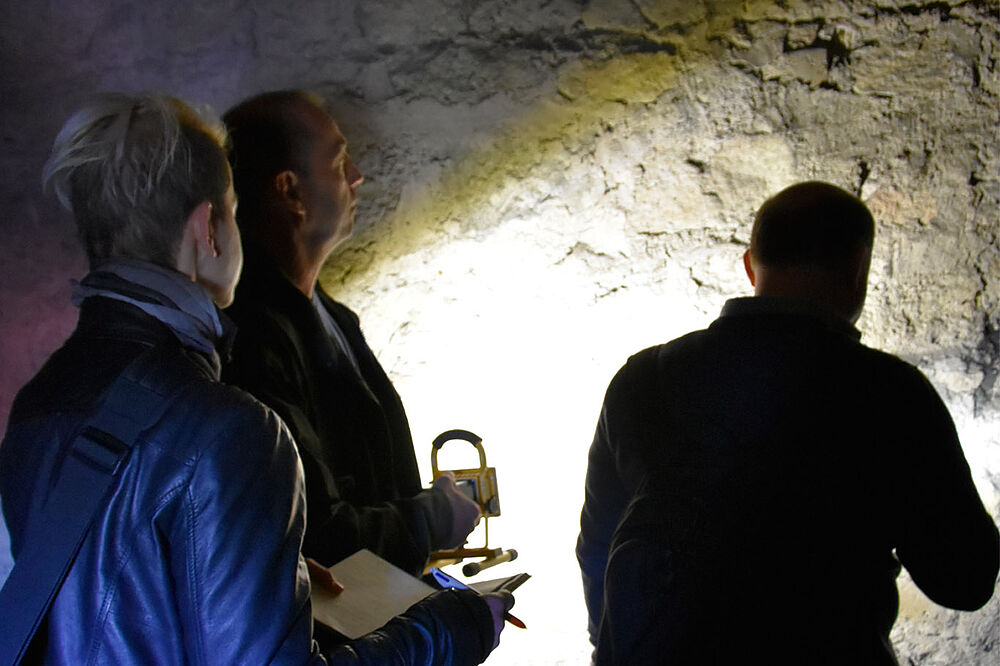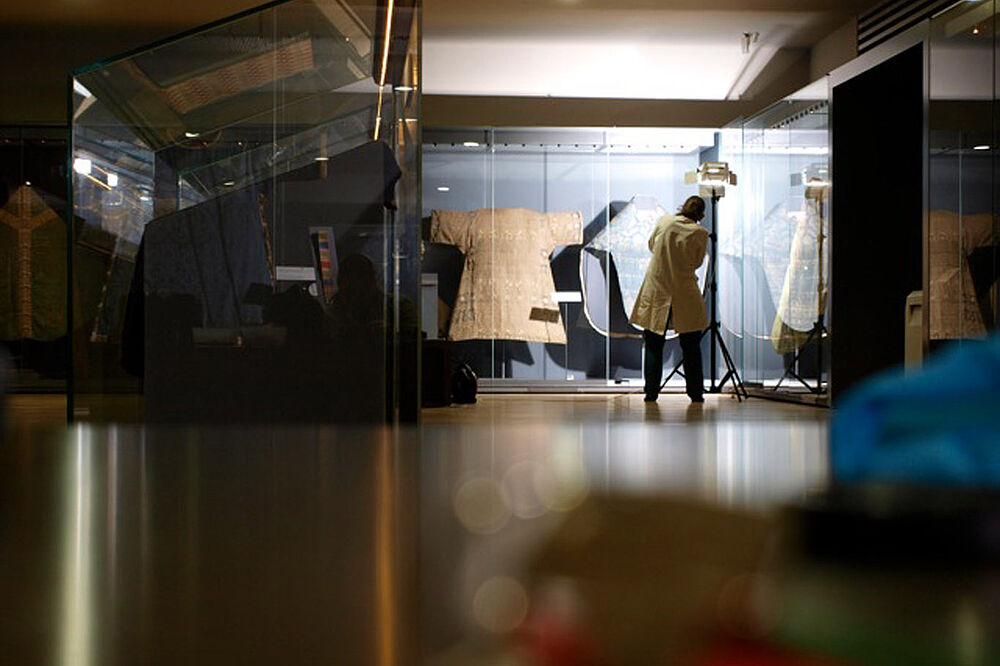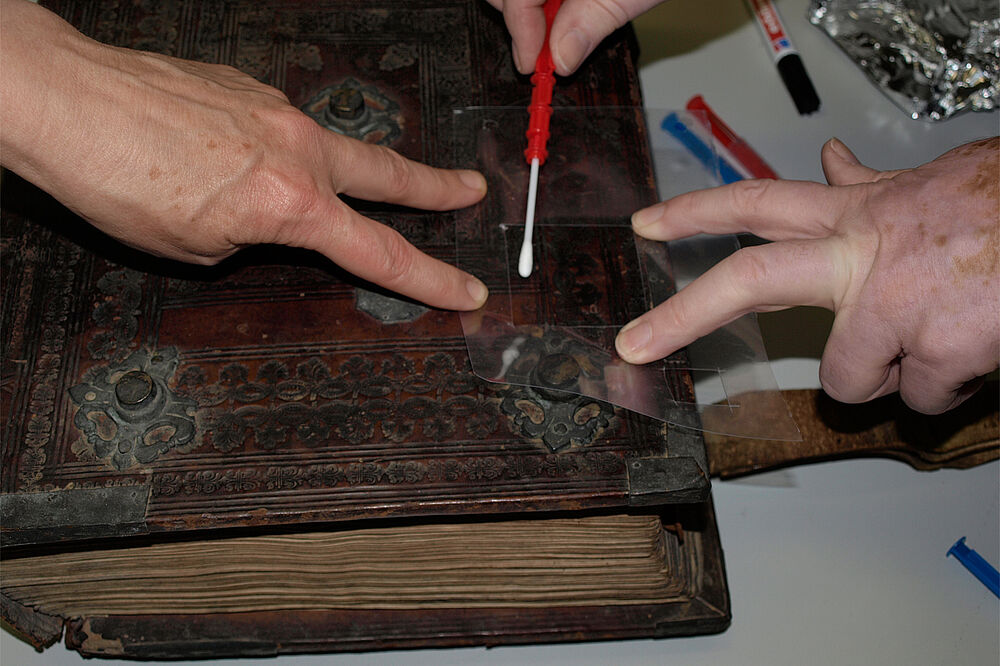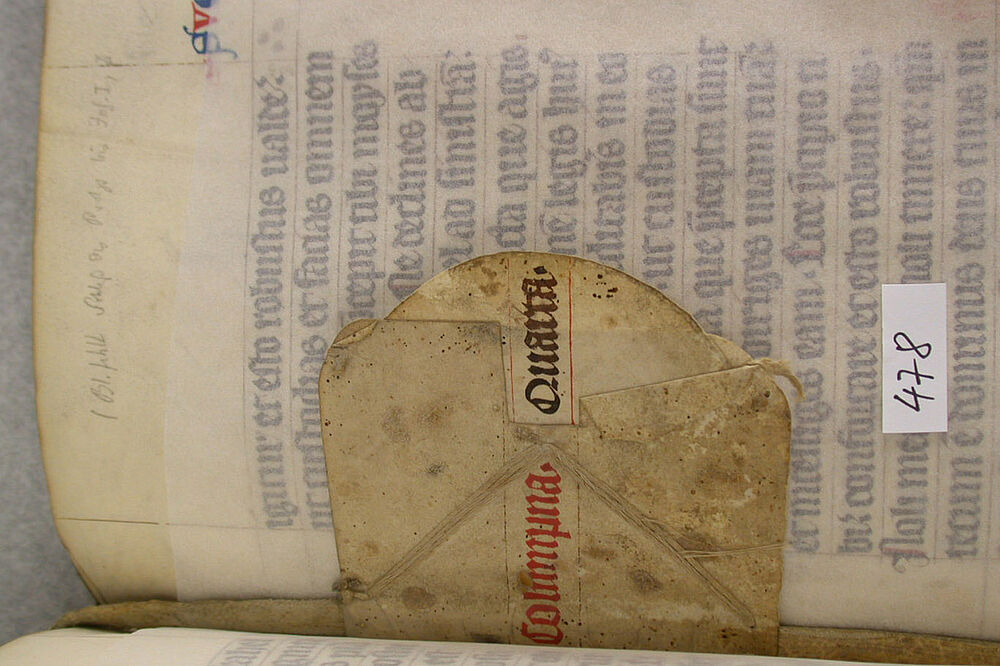Research
As well as Halberstadt Cathedral and the cathedral treasures, Kulturstiftung Sachsen-Anhalt is responsible for some of the most important monuments and art treasures in the region. Our castles, cathedrals and churches diversely reflect more than 1,200 years of Central German history; not only in the historical buildings themselves but also individual parts of the original furnishings and unique holdings which are of great scientific interest.
One of Kulturstiftung Sachsen-Anhalt’s main tasks is thus to research into these monuments and their furnishings. In Halberstadt, the focus is not only on the cathedral and its inventory, but also, above all, on the works of art in the cathedral treasures.
This demanding task requires intensive interdisciplinary collaboration. Important cooperative scientific projects have been set up and will be further expanded in the future. Publications and exhibitions convey the newly gained findings to the public. Kulturstiftung Sachsen-Anhalt invites you to explore the history of art, culture and the region together in its authentic location in Halberstadt!
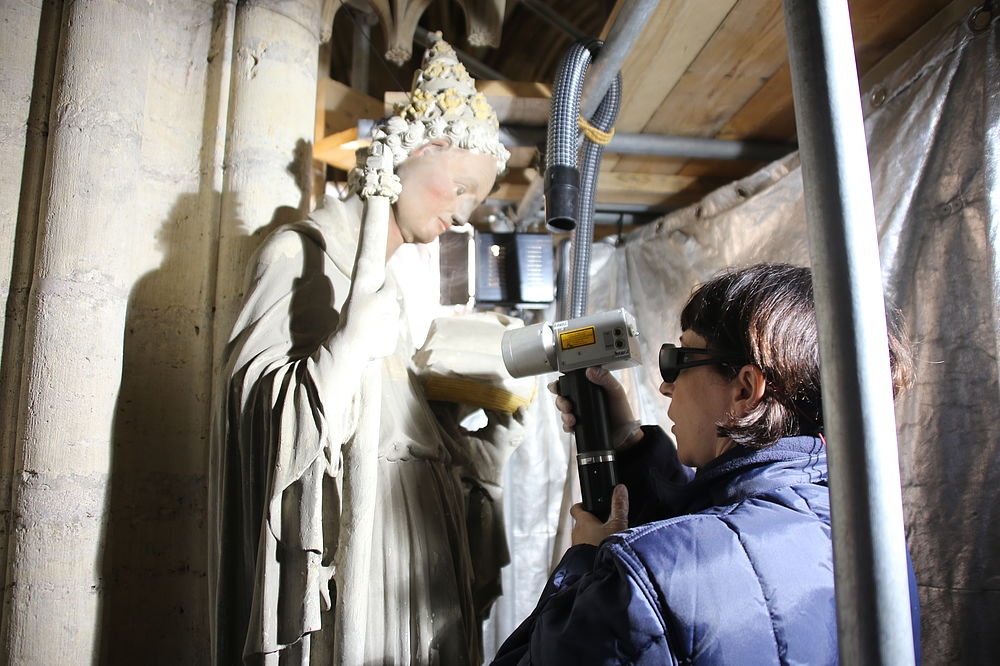
Ongoing research projects
Scientific concept for the urgent preservation of choir column sculptures in Halberstadt Cathedral
The original mediaeval features of Halberstadt Cathedral also include 14 figures on the columns in the main choir. These polychrome stone sculptures were probably made between 1425 and 1475. During restoration work in 2014, they were found to be in critical condition. The polychrome is particularly badly damaged and in some cases at risk.
There are various causes: the process has been exacerbated by climatically fluctuating environmental conditions inside the church and negative environmental influences resulting from the damage to the cathedral in the Second World War. Their deterioration has also been caused in no small part by the lack of restoration work since the 19th century.
Following an extensive assessment, an interdisciplinary research project has now begun to preserve the fragile layers of paint on the mediaeval sculptures. Innovative restoration technologies are being employed: these are being trialled on the choir sculptures and further refined.
- Duration:
- 2016–2019
- Funding providers:
- Federal Environmental Foundation (DBU)
- Project management:
- Kulturstiftung Sachsen-Anhalt
- Partners:
- IDK e.V. – Institute for Diagnostics and Conservation at Monuments in Saxony and Saxony-Anhalt
- LDA – Saxony-Anhalt State Office for Heritage Management and Archaeology
- Corinna Grimm Remus (Dipl. Rest.), Magdeburg
- Bauhaus-Universität Weimar; Faculty of Civil Engineering
- Chair of Modelling and Simulation of Structures
- Scientific advisory board:
- TH Köln University of Applied Sciences
- Potsdam University of Applied Sciences
Inventory of Halberstadt Cathedral
Halberstadt Cathedral is one of the most prominent large Gothic buildings dating from the Middle Ages. It was the main church of the oldest missionary diocese established by Charlemagne on the eastern border of the Frankish Empire, Halberstadt was the only Central German diocese not subject to the Archdiocese of Magdeburg, and this was reflected in its artistic furnishings.
Previous Carolingian and Ottonian buildings were replaced in the 13th century by a Gothic cathedral which was consecrated upon completion in a ceremony in 1491. Inside, it boasts numerous architectural additions and significant sculptures made of wood and stone. The rood from the start of the 13th century and Halberstadt’s mediaeval cathedral treasures are world-famous.
Since January 2016, efforts have been made to carry out a complete inventory of the cathedral and its outbuildings. The aim is to compile an up-to-date, scientifically sound record of its architecture and features, to be published in two volumes.
- Duration:
- 2017–2022
- Funding providers:
- State of Saxony-Anhalt
- Project management:
- Kulturstiftung Sachsen-Anhalt
- Project organisers:
- Dr Heiko Brandl and Anja Seliger
- Partners:
- LDA – Saxony-Anhalt State Office for Heritage Management and Archaeology
- ERZ – European Romanesque Center
Catalogue inventorying Halberstadt’s paraments prior to secularisation
In terms of quantity, paraments – textiles used to decorate the church and in religious ceremonies – make up the largest group of items in the cathedral treasures. Individual pieces such as the Romanesque tapestries are world-renowned and among the undisputed highlights of any visit to the cathedral treasures.
However, although many of the liturgical textiles’ designs are of high quality and exceptionally varied, there has been no research into the vast majority, with only a few exceptions. Their scientific examination is therefore of extreme interest to research and the general public.
That is the aim pursued by this cross-institutional, cooperative project lasting several years. The project is run by the Saxony-Anhalt State Office for Heritage Management and Archaeology (LDA), which has been carrying out research into the precious paraments for decades. When the findings go to press, it will be the first scientific catalogue examining the Halberstadt paraments. As well as describing them in their entirety, it explains the unique nature of this genre of artefacts, both in Halberstadt and on a much bigger scale.
- Duration:
- Since 2011
- Funding providers:
- Project management and cooperating partners
- Project management:
- Saxony-Anhalt State Office for Heritage Management and Archaeology
- Project organiser:
- Barbara Pregla
- Partners:
- Kulturstiftung Sachsen-Anhalt
- Abegg-Stiftung
- Protestant Church in Halberstadt
Completed research projects
Catalogue inventorying Halberstadt manuscripts from the Middle Ages and early modern period
Although Halberstadt Cathedral’s treasures are among the most important mediaeval church treasures in existence, there are still major gaps in the scientific research into the artefacts. One of those gaps has now been filled by research into the mediaeval and early modern manuscripts.
The cathedral treasures contain 39 works of this genre, and there are another 40 in Halberstadt’s historical archives. During this cross-institutional research project, the Herzog August library in Wolfenbüttel updated the description and scientific evaluation of the manuscripts in accordance with the guidelines of the German Research Foundation (DFG). This replaces the catalogue of the Halberstadt manuscripts published by Gustav Schmidt in 1878/81.
- Duration:
- 2007–2018
- Funding providers:
- German Research Foundation (DFG)
- Project management:
- Herzog August library, Wolfenbüttel
- Project organiser:
- Dr Patrizia Carmassi
- Partners:
- Kulturstiftung Sachsen-Anhalt
- Halberstadt town council
- Protestant Church in Halberstadt
- Publication:
- Patrizia Carmassi: Katalog der mittelalterlichen und frühneuzeitlichen Handschriften in Halberstadt (Catalogue of Mediaeval and Early Modern Manuscripts in Halberstadt). List of items held by Kulturstiftung Sachsen-Anhalt, Halberstadt Cathedral treasures and the historical archives of the town of Halberstadt (Wiesbaden, 2018).
- ISBN 978-3-447-10981-9
Practice-based pilot scheme to evaluate and develop a strategy for the preventive conservation of nationally significant artistic and cultural assets, drawing on the example of Halberstadt Cathedral treasures
The preservation of monuments and works of art is a never-ending duty which Kulturstiftung Sachsen‑Anhalt often tackles using the method of “preventive conservation”. This involves pre-emptive, non-destructive measures and management concepts which are geared to the long term and to continuity. These are designed to identify factors which could potentially damage structures and their furnishings at an early stage, and to prevent them where possible.
The Halberstadt Cathedral treasures offer an example of this method in use. With the help of external specialists, the cultural foundation has set up an interdisciplinary management model bringing together specialist academics and restorers to tackle the most important groups of items. It also involves fundamental, sustainable improvements to their storage conditions. The treasures’ reopening with a new presentation in April 2008 was an important milestone in that process.
As part of a research project lasting several years, the measures carried out so far were checked, possible means of improving on them were investigated, and a targeted maintenance concept was developed for the cathedral which can be sustained in the long term.
You can find the detailed final report here.
- Duration:
- 2011–2015
- Funding providers:
- Federal Environmental Foundation (DBU)
- Project management:
- Kulturstiftung Sachsen-Anhalt
- Project organiser:
- Dr Katrin Tille
- Partners:
- LDA – Saxony-Anhalt State Office for Heritage Management and Archaeology
- EKH – Halberstadt Protestant Community
- Publication:
- Christian Philipsen & Katrin Tille (eds.), Modellhaftes praxisorientiertes Evaluierungs- und Strategieprogramm zur „Präventiven Konservierung“ von national wertvollem Kunst- und Kulturgut am Beispiel des Halberstädter Domschatzes. 2012–2016 project period (Gommern, 2016).
- ISBN 978-3-00-055525-1
Contact details
Contact person
- Dr. Katrin Tille
- Research | Publications
- Kulturstiftung Sachsen-Anhalt | Stolberg curia offices
- Domplatz 33 a
- 38820 Halberstadt
- T: +49 3941 56749-11
- katrin.tille@kulturstiftung-st.de

